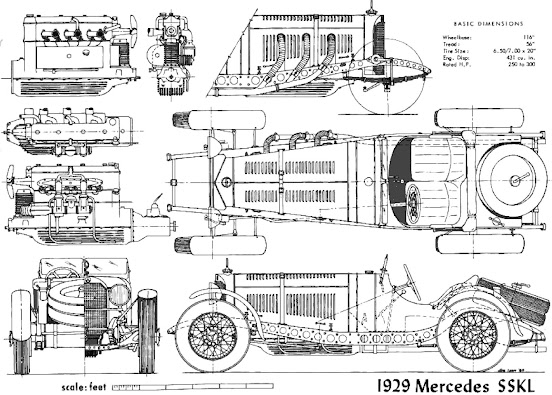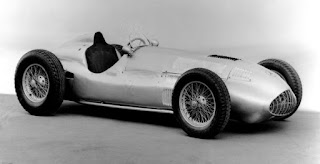Rat (pronounced ratt)
(1) In zoology, any of several long-tailed rodents of the
family Muridae, of the genus Rattus and related genera, distinguished from the
mouse by being larger.
(2) In (scientifically inaccurate) informal use, any of the
numerous members of several rodent families (eg voles & mice) that resemble
true rats in appearance, usually having a pointy snout, a long, bare tail, and
body length greater than 5 inches (120 mm).
(3) In hairdressing, a wad of shed hair used as part of a
hairstyle; a roll of material used to puff out the hair, which is turned over
it.
(4) In the slang of certain groups in London, vulgar slang
for the vagina.
(5) As “to rat on” or “to rat out”, to betray a person or
party, especially by telling their secret to an authority or enemy; to turn
someone in.
(6) One of a brace of rodent-based slang terms to differentiate between the small-block (mouse motor) and big-block (rat motor) Chevrolet V8s built mostly in the mid-late twentieth century but still available (as "crate" engines) from US manufacturers.
(7) As RAT, a small turbine that is connected to a hydraulic pump, or electrical generator, installed in an aircraft and used as a power source.
(8) Slang term for a scoundrel, especially men of dubious
morality.
(9) In the criminal class and in law enforcement, slang for
an informer.
(10) In politics, slang for a person who abandons or betrays
his party or associates, especially in a time of trouble.
(11) Slang for a person who frequents a specified place (mall
rat, gym rat etc).
(12) In hairdressing, a pad with tapered ends formerly used
in women's hair styles to give the appearance of greater thickness.
(13) In the slang of blue-water sailors, a place in the sea
with rapid currents and crags where a ship is prone to being broken apart in
stormy weather.
(14) In zoology (in casual use), a clipping of muskrat.
Pre 1000: From the Middle English ratte, rat & rotte, from the Old English ræt & rætt, and the Latin rodere from the Proto-Germanic rattaz & rattō (related also to the West Frisian rôt, the German Ratz & Ratte and the Swedish råtta & the Dutch rat), of uncertain origin but perhaps from the primitive Indo-European rehed- (to scrape, scratch, gnaw). Zoological anthropologists however point out it’s possible there were no populations of rats in the Northern Europe of antiquity, and the Proto-Germanic word may have referred to a different animal. The attestation of this family of words dates from the twelfth century. Some of the Germanic cognates show considerable consonant variation such as the Middle Low German ratte & radde and the Middle High German rate, ratte & ratze, the irregularity perhaps symptomatic of a late dispersal of the word, although some etymologists link it with the Proto-Germanic stem raþō (nom); ruttaz (gen), the variations arising from the re-modellings in the descendants.
Mall rats. In North America and other developed markets, there is now less scope for habitués because changing consumer behavior has resulted in a dramatic reduction in the volume of transactions conducted in physical stores and some malls are being either abandoned or re-purposed (health hubs and educational facilities being a popular use).
The human distaste for these large rodents has made rat a productive additive in English. Since the twelfth century it’s been applied (usually to a surname) to persons either held to resemble rats or share with them some characteristic or perception of quality with them. The specific sense of "one who abandons his associates for personal advantage" is from the 1620s, based on the belief that rats leave a ship about to sink or a house about to fall, and this led to the meaning "traitor” or “informant" although, perhaps surprisingly, there no reference to rat in this sense prior to 1902 where as the modern-sounding sense of associative frequency (mall-rat, gym-rat etc) was noted as early as 1864, firstly as “dock-rat”. Dr Johnson dates “to smell a rat”, based on the behaviour of cats, to the 1540s. Sir Boyle Roche (1736-1807), was an Irish MP famous for mangled phrases and mixed metaphors, of the best remembered of which was “I smell a rat; I see him forming in the air and darkening the sky; but I'll nip him in the bud". There’s the rat-terrier (1852), the rat-catcher (1590s), the rat-snake (1818), rat-poison, (1799), the rat trap (late 1400s), the rat-pack (1951) and rat-hole which in 1812, based on the holes gnawed in woodwork by rats meant “nasty, messy place”, the meaning extended in 1921 to a "bottomless hole" (especially one where money goes). Ratfink (1963) was juvenile slang either coined or merely popularized by US custom car builder Ed "Big Daddy" Roth (1932-2001), who rendered a stylised rat on some of his creations, supposedly to lampoon Mickey Mouse.
Rat has a specific meaning in the cricketing slang of the West Indies, referring to a ball which, after being delivered by the bowler, rather than bouncing off the pitch at some angle, instead runs along the ground, possibly hitting the stumps with sufficient force to dislodge the bails, dismissing the batsman, the idea being of a rat scurrying across the ground. In Australian slang, the same delivery is called a mullygrubber which, although it sounds old-fashioned, is said to date only from the 1970s, the construct thought based on the dialectal rural term mully (dusty, powdery earth) + grub(ber) in the sense of the grubs which rush about in the dirt if disturbed in such an environment. Such deliveries are wholly serendipitous (for the bowler) and just bad luck (for the batsman) because it's not possible for such as ball to be delivered on purpose; they happen only because of the ball striking some crack or imperfection in the pitch which radically alters it usual course to a flat trajectory. If a batsman is dismissed as a result, it's often called a "freak ball" or "freak dismissal". Of course if a ball is delivered underarm a rat is easy to effect but if a batsman knows one is coming, while it's hard to score from, it's very easy to defend against. The most infamous mullygrubber was bowled at the Melbourne Cricket Ground (MCG) on 1 February 1981 when, with New Zealand needing to score six (by hitting the ball, on the full, over the boundary) of the final delivery of the match, the Australian bowler sent down an underarm delivery, the mullygrubber denying the batsman the opportunity to score and securing an Australian victory. Although then permissible within the rules, it was hardly in the spirit of the game and consequently, the regulations were changed.
The Ram Air Turbine
Vickers VC10.
RAT in operation.
The airline manufacturers have been exploring whether on-board
fuel-cell technology can be adapted to negate the need for RAT, at least in the
smaller, single-aisle aircraft where the weight of such a unit might be equal
to or less than the RAT equipment. The
attraction of housing a in an airliner's wing-body fairing is it would be a step
towards the long-term goal of eliminating an airliner's liquid-fuelled auxiliary
turbine power unit. Additionally, if the
size-weight equation could be achieved, there’s the operational advantage that a
fuel-cell is easier to test than a RAT because, unlike the RAT, the fuel-cell can
be tested without having to power-up most of the system. The physics would also be attractive, the
power from a fuel cell higher at lower altitudes where as the output of a RAT
declines as airspeed decreases, a potentially critical matter given it’s during
the relatively slow approach to a landing that power is needed to extend the trailing
edge of the wing flaps.
If the weight and dimensions of the fuel cell is at least "comparable"
to a RAT and the safety and durability testing is successful, at least on
smaller aircrafts, fuel-cells might be an attractive option for new aircraft
although, at this stage, the economics of retro-fitting are unlikely to be compelling. Longer term research is also looking at a continuously
running fuel cell producing oxygen-depleted exhaust gas for fuel-tank inerting,
and water for passenger amenities, thereby meaning an aircraft could be operated
on the on the ground without burning any kerosene, the fuel-cell providing
power for air conditioning and electrical systems.
The only rocket-powered fighter ever used in combat, the Messerschmitt Me 163 Komet had a small RAT in the nose to provide electrical power. The early prototypes of the somewhat more successful (and much more influential) Messerschmitt Me 262 jet fighter also had a propeller in the nose for the first test flights but it wasn't a a RAT; it was attached to a piston engine which was there as an emergency backup because of the chronic unreliability of the early jet engines. It proved a wise precaution, the jets failing on more than one occasion.
Small and big-block Chevrolet V8s compared, the small-block (mouse) to the left in each image, the big-block (rat) to the right.
Mouse and rat are informal terms used respectively to refer to the classic small (1955-2003) and big-block Chevrolet V8s (1958-2021). The small-block was first named after a rodent although the origin is contested; either it was (1) an allusion to “mighty mouse” a popular cartoon character of the 1950s, the idea being the relatively small engine being able to out-perform many bigger units from other manufacturers or (2) an allusion to the big, heavy Chrysler Hemi V8s (the first generation 331 (5.4 litre), 354 (5.8) & 392 (6.4) cubic inch versions) being known as “the elephant”, the idea based on the widely held belief that elephants are scared of mice (which may actually be true although the reason appears not to be the long repeated myth it’s because they fear the little rodents might climb up their trunk). Bee might have been a better choice; elephants definitely are scared of bees. The mouse (small-block) and rat (big-block) distinction is simple to understand: the big block is externally larger although counterintuitively, the internal displacement of some mouse motors was greater than some rats.




























